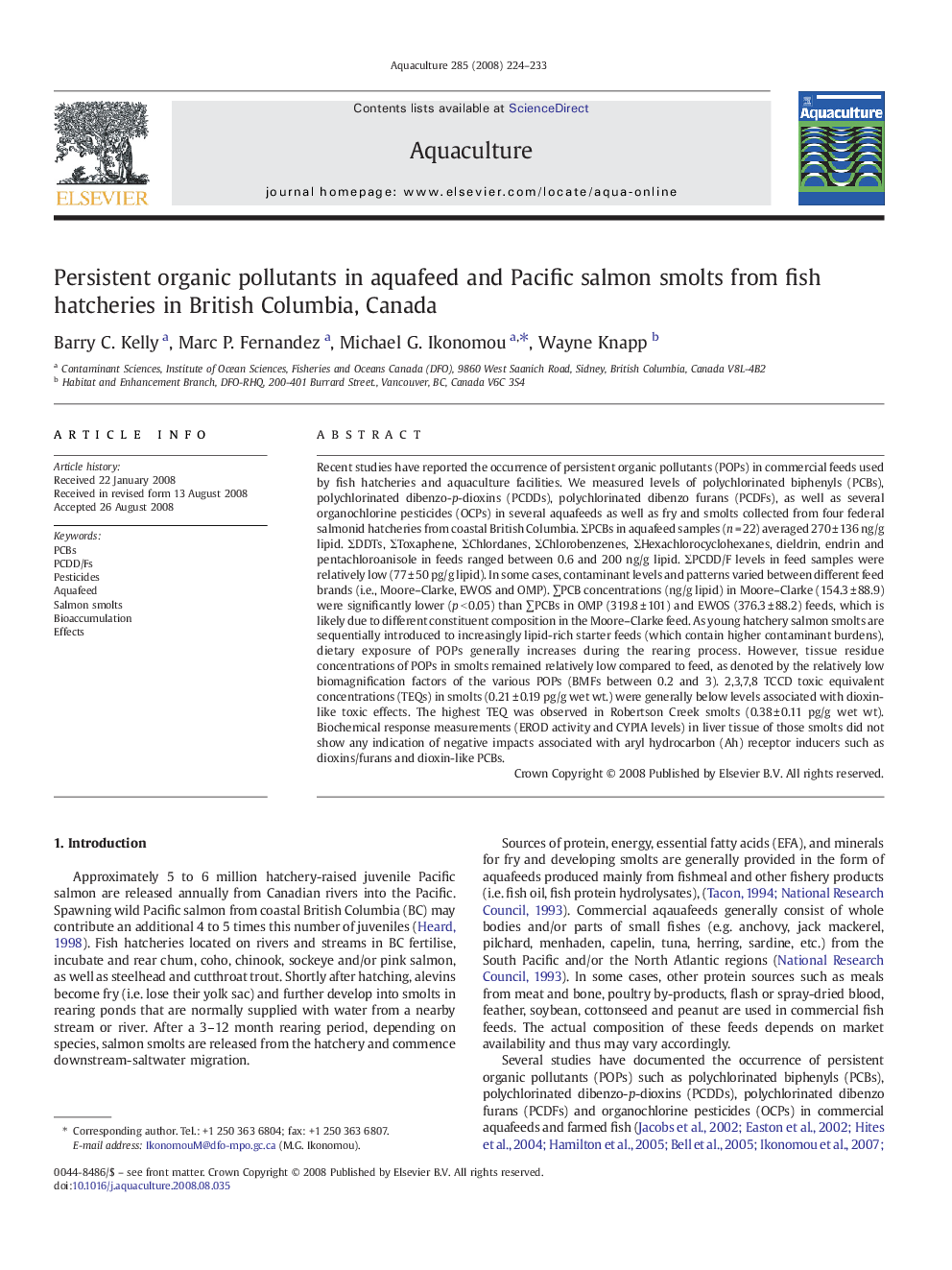| کد مقاله | کد نشریه | سال انتشار | مقاله انگلیسی | نسخه تمام متن |
|---|---|---|---|---|
| 2424375 | 1552956 | 2008 | 10 صفحه PDF | دانلود رایگان |

Recent studies have reported the occurrence of persistent organic pollutants (POPs) in commercial feeds used by fish hatcheries and aquaculture facilities. We measured levels of polychlorinated biphenyls (PCBs), polychlorinated dibenzo-p-dioxins (PCDDs), polychlorinated dibenzo furans (PCDFs), as well as several organochlorine pesticides (OCPs) in several aquafeeds as well as fry and smolts collected from four federal salmonid hatcheries from coastal British Columbia. ΣPCBs in aquafeed samples (n = 22) averaged 270 ± 136 ng/g lipid. ΣDDTs, ΣToxaphene, ΣChlordanes, ΣChlorobenzenes, ΣHexachlorocyclohexanes, dieldrin, endrin and pentachloroanisole in feeds ranged between 0.6 and 200 ng/g lipid. ΣPCDD/F levels in feed samples were relatively low (77 ± 50 pg/g lipid). In some cases, contaminant levels and patterns varied between different feed brands (i.e., Moore–Clarke, EWOS and OMP). ∑PCB concentrations (ng/g lipid) in Moore–Clarke (154.3 ± 88.9) were significantly lower (p < 0.05) than ∑PCBs in OMP (319.8 ± 101) and EWOS (376.3 ± 88.2) feeds, which is likely due to different constituent composition in the Moore–Clarke feed. As young hatchery salmon smolts are sequentially introduced to increasingly lipid-rich starter feeds (which contain higher contaminant burdens), dietary exposure of POPs generally increases during the rearing process. However, tissue residue concentrations of POPs in smolts remained relatively low compared to feed, as denoted by the relatively low biomagnification factors of the various POPs (BMFs between 0.2 and 3). 2,3,7,8 TCCD toxic equivalent concentrations (TEQs) in smolts (0.21 ± 0.19 pg/g wet wt.) were generally below levels associated with dioxin-like toxic effects. The highest TEQ was observed in Robertson Creek smolts (0.38 ± 0.11 pg/g wet wt). Biochemical response measurements (EROD activity and CYPIA levels) in liver tissue of those smolts did not show any indication of negative impacts associated with aryl hydrocarbon (Ah) receptor inducers such as dioxins/furans and dioxin-like PCBs.
Journal: Aquaculture - Volume 285, Issues 1–4, 7 December 2008, Pages 224–233